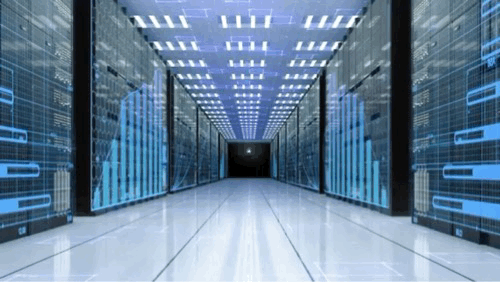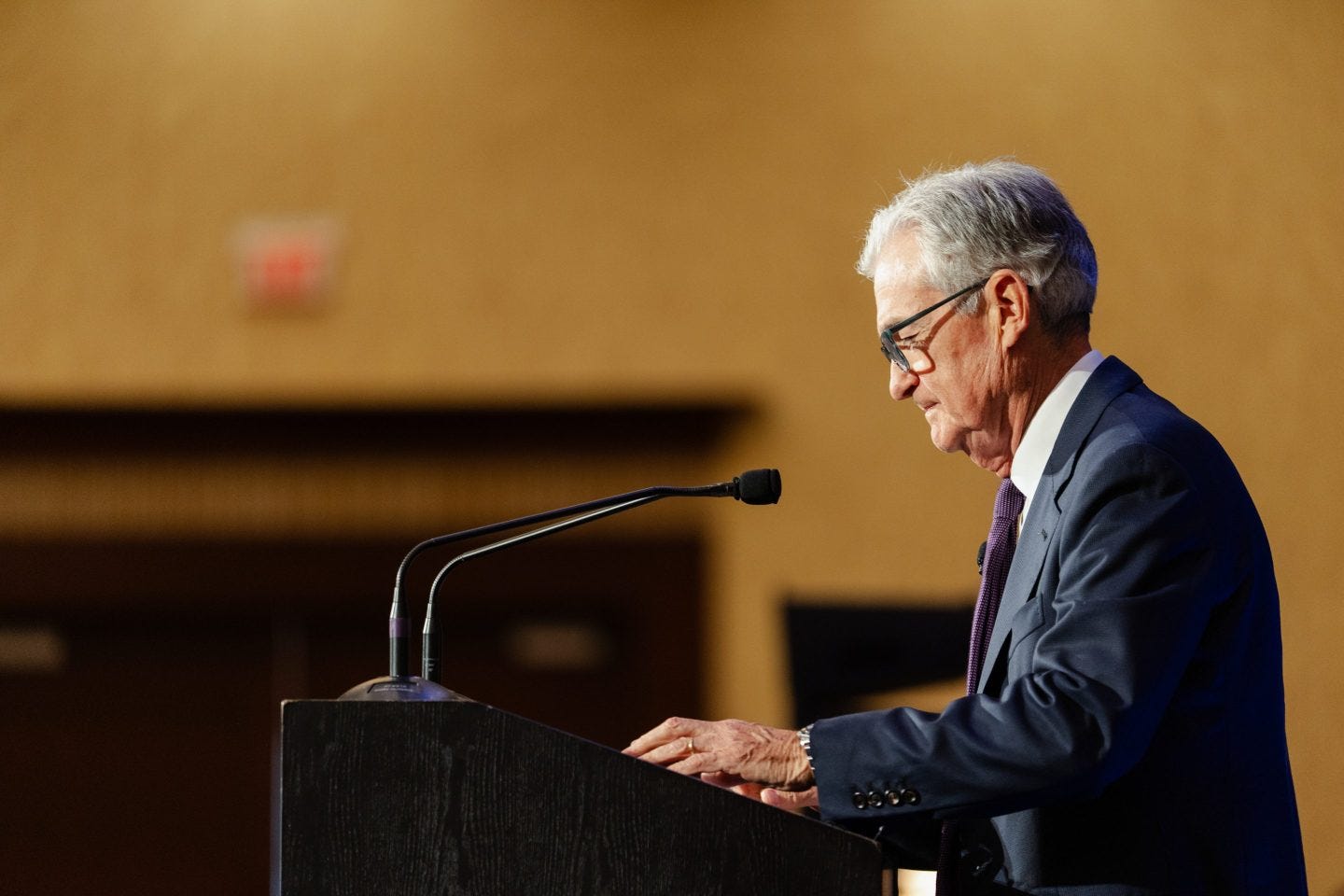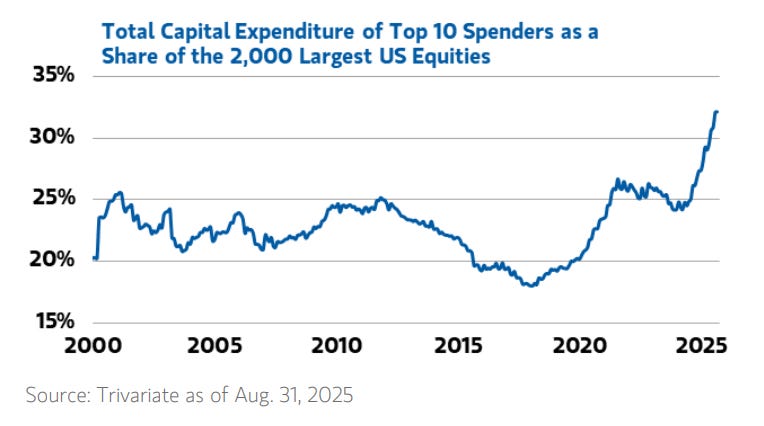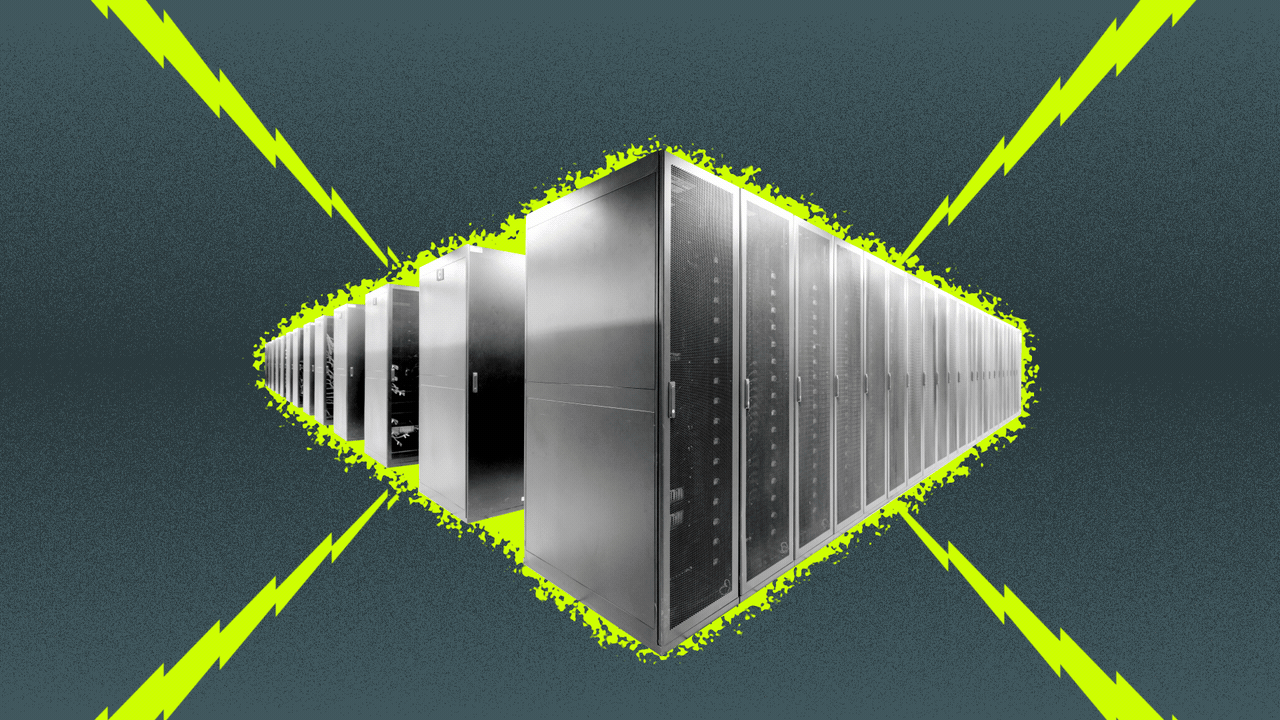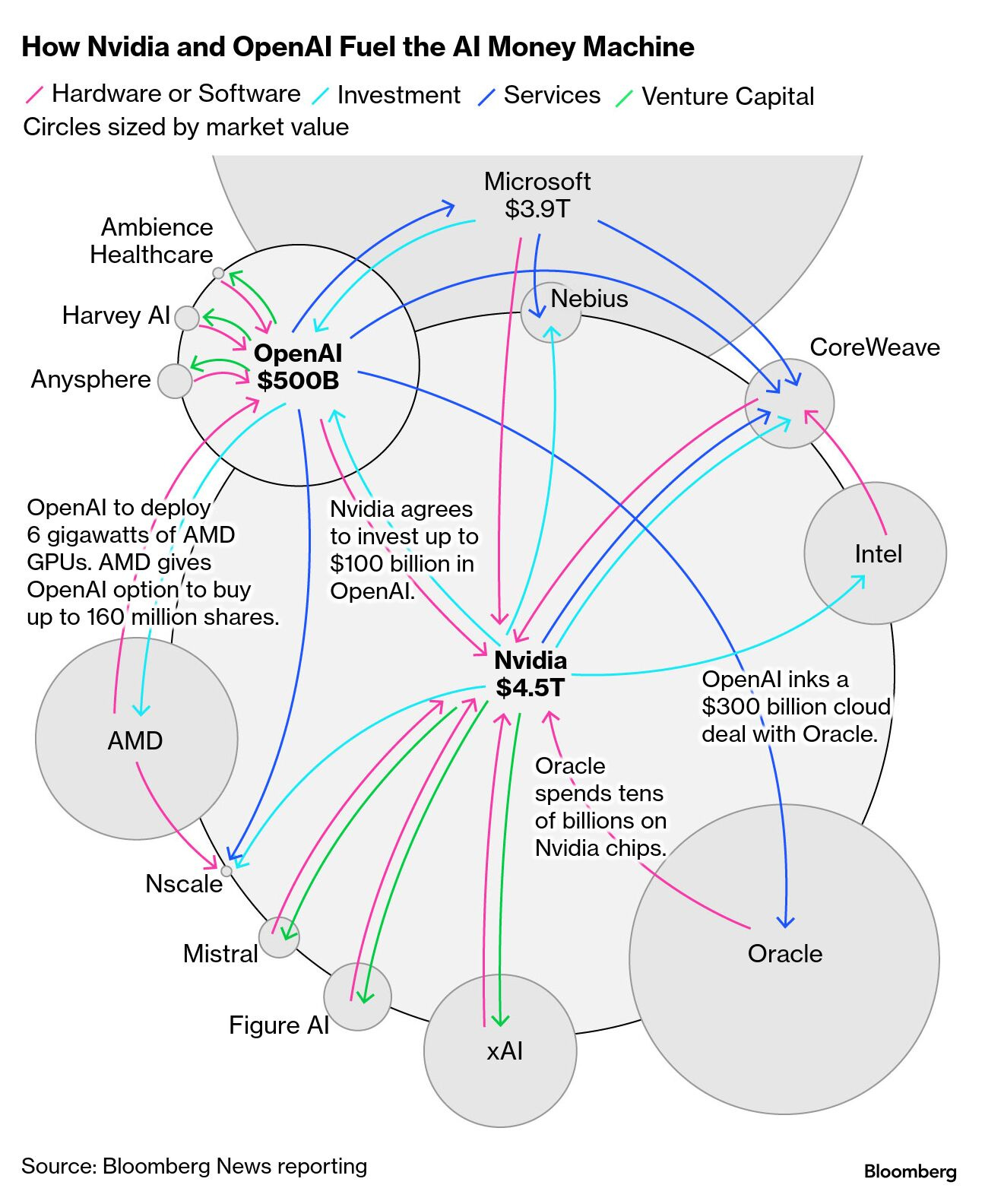
AI: Boom in AI now the 'tail wagging the dog'. RTZ #869
An unintended consequence of the extraordinary , multi-year, multi-trillion dollar, AI Data Center, Chips, Infrastructure, and Power boom is manifesting early in this AI Tech Wave. The tail is wagging the dog.
We’ve talked a lot in these pages about the unprecedented scale of these investments by the ‘Mag 7’, and particularly by OpenAI of late.
Not just the inputs above, but other areas like the ferocious battle for premier AI Research Talent both here and globally. With China increasingly in the mix as the largest source of AI talent, and second largest AI market.
But what’s unusual is that the AI Data Center/Infrastructure/Power ramp, and ‘round-robin’ deals is showing up in big ways in the economic data. And that’s something worth noting and studying. Way before any productivity gains from AI itself.
Axios even calls it ‘AI’s mega-blob’ era.
Fortune lays it out in “Without data centers, GDP growth was 0.1% in the first half of 2025, Harvard economist says”:
“U.S. GDP growth in the first half of 2025 was almost entirely driven by investment in data centers and information processing technology, according to Harvard economist Jason Furman. Excluding these technology-related categories, Furman calculated in a Sept. 27 post on X.com GDP growth would have been just 0.1% on an annualized basis, a near standstill that underlines the increasingly pivotal role of high-tech infrastructure in shaping macroeconomic outcomes.”
“Furman’s findings, shared online and echoed by financial analysts including Robert Armstrong of the Financial Times‘ Unhedged (the same writer who coined the term “TACO trade’), echo several months of observations on the remarkable surge in data-center infrastructure. In August, Renaissance Macro Research estimated, to date in 2025, the dollar value contributed to GDP growth by AI data-center buildout had surpassed U.S. consumer spending for the first time ever. That’s remarkable considering consumer spending is two-thirds of GDP.”
The details are noteworthy:
”Technically, as Furman notes, investment in information-processing equipment and software was only 4% of U.S. GDP for the first half of 2025, yet it also accounted for fully 92% of GDP growth over that period. Furman added it’s probably not the case the U.S. economy would have recorded almost no expansion at all absent this buildout, reasoning that “absent the AI boom we would probably have lower interest rates [and] electricity prices, thus some additional growth in other sectors. In very rough terms that could maybe make up about half of what we got from the AI boom.” But still, it’s big.’“’
“Tech giants such as Microsoft, Google, Amazon, Meta, and Nvidia have poured tens of billions of dollars into building and upgrading data centers, responding to explosive demand for artificial intelligence and large language models that require massive computing resources.”
“Lisa Shallet, chief investment officer for Morgan Stanley Wealth Management, flagged on Sept. 29 that spending was truly massive among the so-called “hyperscalers” who are striving for huge computing, storage and networking capacity.
“In recent years, hyperscaler capex on data center and related items has risen fourfold and is nearing $400 billion annually,” she wrote. “The speed of growth and size of the investment are skewing its aggregate economic impact, with the top 10 spenders accounting for nearly a third of all spending … For perspective, it’s estimated that data center-linked spending is adding roughly 100 basis points to U.S. real GDP growth.”
The contrast against the broader economy is also notable:
“This surge in technology-led growth comes against a backdrop of wider economic sluggishness and paradoxically strong GDP growth. Job creation has slowed, raising concerns that, absent technology investment, the U.S. economy could have slipped into recession. Other sectors—from manufacturing and real estate to retail and services—contributed little or even detracted from overall output in the first half of 2025.”
“And yet, as Apollo Global Management Chief Economist Torsten Sløk has noted, the GDP figures speak of a (statistically) strong economy.”
“The consensus has been wrong since January,” Sløk said in a note circulated to clients in early October, adding the average of economists’ forecasts has said the U.S. economy would slow down for nine months consecutively. “But the reality is that it has simply not happened … We in the economics profession need to look ourselves in the mirror.”
Resulting in some pithy observations:
“Furman’s analysis adds to the snarky and accurate observation by Rusty Foster of Today in Tabs who quipped: “Our economy might just be three AI data centers in a trench coat”—an allusion to the data-center buildout boom and to the cartoon trope/sight gag of several young boys teaming up to disguise themselves as an adult.”
“Morgan Stanley Chief Economist Michael Gapen ventured a guess on Oct. 6 about “the mystery” of the 2025 economy, “between solid spending data and weak hiring.” He argued that it “can be explained by a corporate sector that absorbed the initial cost of tariffs and reduced unit labor costs and profitability rather than raising prices.”
“In other words, something that has nothing to do with the data-center buildout that is widely fueling bubble fears, even among Amazon founder Jeff Bezos himself, who insists these data centers are an “industrial bubble” rather than a financial one, and we will all be glad someday to have such incredible computing power at our fingertips with so many hundreds of billions spent. The question of sustainable GDP growth is a separate one.”
A broader concern that is also rising is the ‘circular’ nature of the AI investments. Something I’ve discussed for years now as ‘AI Boomerang’ investments.
Bloomberg observes it as “OpenAI, Nvidia Fuel $1 Trillion AI Market With Web of Circular Deals”:
“A wave of deals and partnerships are escalating concerns that the trillion-dollar AI boom is being propped up by interconnected business transactions.”
“Never before has so much money been spent so rapidly on a technology that, for all its potential, remains largely unproven as an avenue for profit-making. And often, these investments can be traced back to two leading firms: Nvidia and OpenAI. The recent wave of deals and partnerships involving the two are escalating concerns that an increasingly complex and interconnected web of business transactions is artificially propping up the trillion-dollar AI boom. At stake is virtually every corner of the economy, with the hype and buildout of AI infrastructure rippling across markets, from debt and equity to real estate and energy.”
The piece has a chart on the recent ‘circular’ deals, also worth absorbing:
Which all then leads to rising speculation of an ‘AI Bubble’ by observers both within and outside the tech industry.
It’s important to note this all, but also realize that timing in these things is hard. Remember, Fed chairman Alan Greenspan coined ‘Irrational Exuberance’ in 1996, with the Internet ‘Dot-com Bubble’ not climaxing until early the next century.
For now, the lights are rapidly flashing green lights for the industry, investors, and the interested world at large. How long all that continues from a sentiment perspective is hard to time.
As mentioned above, Axios even has a term for the current AI phase, calling it the ‘AI mega-blob era’.
And adds this coda of caution:
“The bottom line: The more entangled AI firms get with one another, the more likely any setback to one will turn into a calamity for all.”
“Right now, OpenAI — a company with enormous potential that’s also raising enormous sums to place enormous bets — is propping up much of the AI industry, and the industry is propping up much of the U.S. economy.”
“If it falters, or investors lose faith, everyone else will be on the hook, too.”
But in the meantime, the bottom up secular AI technology innovation, scale, and acceleration underneath these numbers, is not hard to see all right now in this AI Tech Wave. Stay tuned.
(NOTE: The discussions here are for information purposes only, and not meant as investment advice at any time. Thanks for joining us here)

